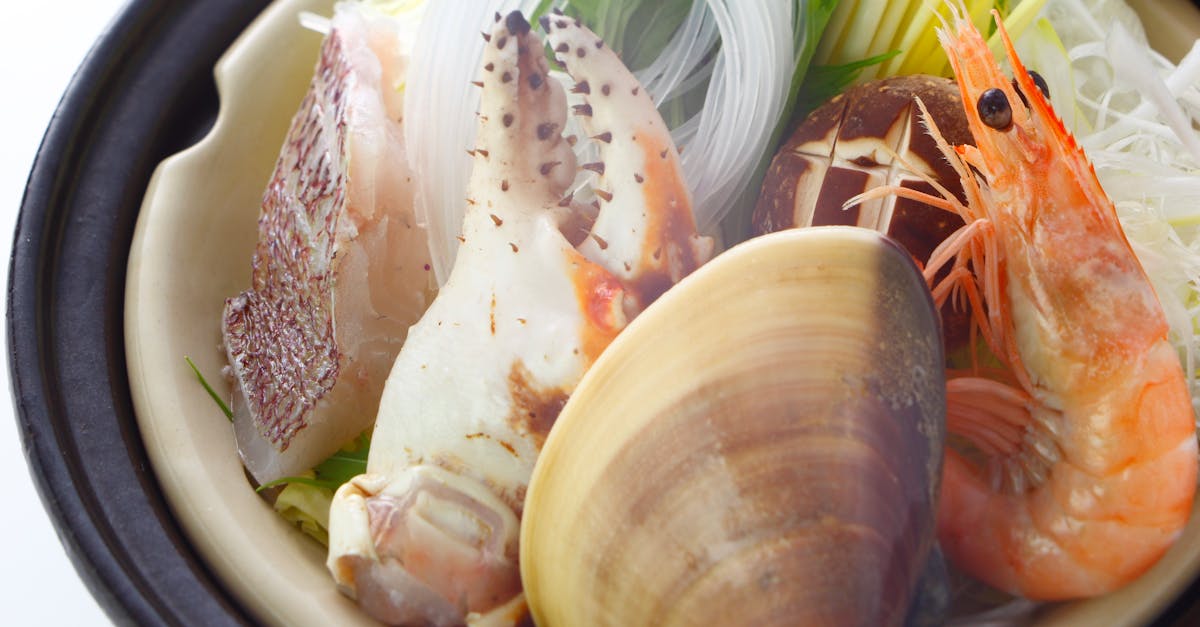What to Know About Low Histamine Fish and Digestion

Benefits of Low Histamine Fish
Low histamine fish offers a variety of health benefits, particularly for individuals sensitive to histamines. These fish types, such as fresh cod, haddock, and sole, contain lower histamine levels compared to their counterparts. Consuming such fish can help reduce the risk of allergic reactions that may be triggered by high-histamine foods. Additionally, incorporating low histamine fish into one's diet can help maintain a balanced intake of essential nutrients, including omega-3 fatty acids, which promote overall health.
The incorporation of low histamine fish into meals can also aid in digestive comfort. Many people experience symptoms like bloating, cramps, or even headaches when consuming higher histamine foods. By opting for low histamine varieties, one might find it easier to enjoy meals without the worry of exacerbating these unpleasant reactions. Furthermore, these fish provide a source of lean protein that supports muscle health and can be beneficial for weight management.
Nutritional Advantages for Digestive Health
Low histamine fish offers several nutritional benefits that contribute positively to digestive health. Rich in Omega-3 fatty acids, these fish help reduce inflammation in the gut. This reduction can create a more balanced digestive environment, allowing for improved nutrient absorption. The high protein content also supports muscle repair and growth, which can be particularly beneficial for those recovering from digestive disorders.
In addition, low histamine fish is generally easier to digest compared to other protein sources. It contains fewer complex proteins that may trigger histamine release, making it a suitable option for individuals with histamine intolerance. Being a source of essential vitamins and minerals, such as B vitamins and selenium, these fish play a vital role in supporting overall digestive processes and maintaining a healthy gut microbiome.
Symptoms of Histamine Intolerance
Individuals experiencing histamine intolerance may encounter a variety of symptoms that affect their day-to-day wellbeing. Common manifestations include digestive issues such as bloating, abdominal pain, and diarrhoea. Other signs can include headaches, rashes, and even respiratory problems. The severity and combination of these symptoms can vary widely, making it crucial for those affected to be aware of their body's reactions.
Recognising these symptoms can often lead to a better understanding of personal triggers. Monitoring food intake is essential, as certain foods can exacerbate the condition. Low histamine fish might offer relief to those suffering, but it is also important to consider other dietary components. Identifying specific triggers enables individuals to tailor their diets more effectively, potentially alleviating discomfort.
Recognising Digestive Distress Related to Histamine
Many individuals experience digestive distress when consuming foods high in histamine. Symptoms may include bloating, abdominal pain, nausea, and other gastrointestinal issues. These reactions can arise from various sources, with histamine-rich foods triggering an inflammatory response in sensitive individuals. It is crucial to pay attention to these symptoms as they can significantly affect overall well-being.
Identifying specific triggers can help in managing symptoms effectively. Keeping a food diary to track meals and subsequent reactions may provide valuable insights. This approach can lead to a better understanding of which foods to avoid and help seekers of relief build a personalised dietary strategy. Recognising these patterns is essential for navigating digestive challenges linked to histamine intolerance.
Combining Low Histamine Fish with Other Foods
Pairing low histamine fish with complementary foods can enhance both flavour and nutritional value while supporting digestive health. Fresh vegetables such as spinach, carrots, and zucchini offer essential vitamins and minerals. Incorporating healthy fats like olive oil or avocado can further aid in digestion and provide a satisfying meal.
Grains like quinoa or brown rice serve as a solid base when combined with fish, adding fibre to the plate. The presence of herbs and spices, particularly fresh ones like basil or parsley, can elevate the dish’s taste without introducing histamine. These combinations not only provide a balanced plate but also help in minimising the risk of histamine reactions.
Ideal Pairings for Enhanced Digestion
Combining low histamine fish with certain complementary foods can optimise digestive health. Foods rich in fibre, such as leafy greens and vegetables, not only provide essential nutrients but also support gut health by promoting regular bowel movements. Adding healthy fats, like avocado or olive oil, can help with the absorption of fat-soluble vitamins present in fish, enhancing overall nutritional benefits.
Incorporating herbs and spices can further elevate the meal while aiding digestion. For instance, ginger and turmeric possess anti-inflammatory properties that can soothe the digestive tract. Pairing low histamine fish with probiotics like plain yogurt or fermented vegetables introduces beneficial bacteria, fostering a balanced gut microbiome and improving digestive function. This thoughtful combination nurtures not only flavour but also digestive wellness.
FAQS
What types of fish are considered low in histamine?
Fish such as fresh salmon, trout, cod, and haddock are generally considered low in histamine. It's important to choose fresh fish, as histamine levels can increase in fish that has not been stored properly.
How can low histamine fish benefit digestive health?
Low histamine fish are easier to digest for those with histamine intolerance, reducing the risk of digestive distress. They also provide essential nutrients like omega-3 fatty acids, which can promote overall gut health.
What are common symptoms of histamine intolerance?
Symptoms can include bloating, gas, abdominal pain, nausea, headaches, and skin reactions such as rashes or hives. These symptoms can vary in severity depending on the individual and the amount of histamine consumed.
Can I combine low histamine fish with other foods?
Yes, combining low histamine fish with low-histamine vegetables and grains can enhance digestion. Good pairings include steamed broccoli, quinoa, and fresh herbs like basil or parsley.
How can I ensure the fish I buy is low in histamine?
To ensure low histamine levels, purchase fish that has been freshly caught and stored properly. Avoid canned, smoked, or processed fish, as these often have higher histamine levels due to preservation methods.
Related Links
Why Low Histamine Fish is Essential for Heart HealthWhat are the Health Benefits of Low Histamine Fish